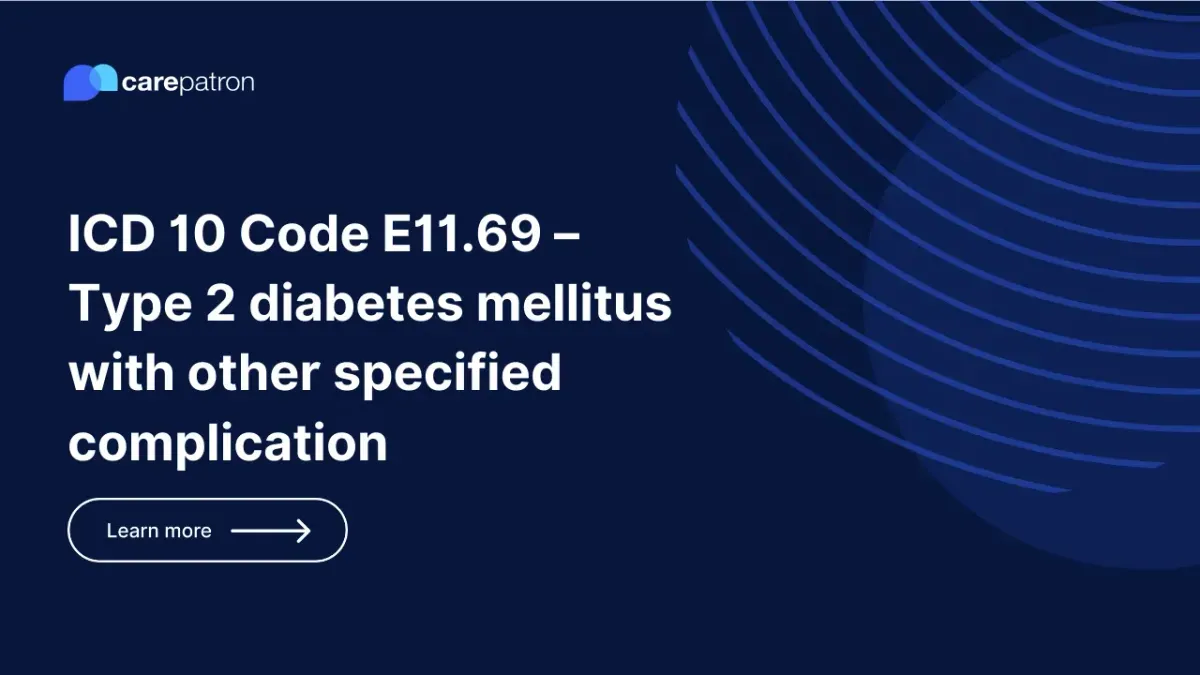
E11.69 – Type 2 diabetes mellitus with other specified complication | ICD-10-CM
Learn more about the diagnosis, clinical information, billability, etc., of E11.69 - Type 2 diabetes mellitus with other specified complication.
Use Code
Commonly asked questions
You use E11.69 only when the patient has type 2 diabetes mellitus, and their complications aren’t mentioned in other diagnosis codes.
Yes, E11.69 is a billable diagnosis that can be used for reimbursements.
The diagnosis code E11.69 refers to type 2 diabetes mellitus with other specified complications or, in other words, Type 2 diabetes with complications not mentioned in other E11 diagnosis codes.
EHR and practice management software
Get started for free
*No credit card required
Free
$0/usd
Unlimited clients
Telehealth
1GB of storage
Client portal text
Automated billing and online payments
